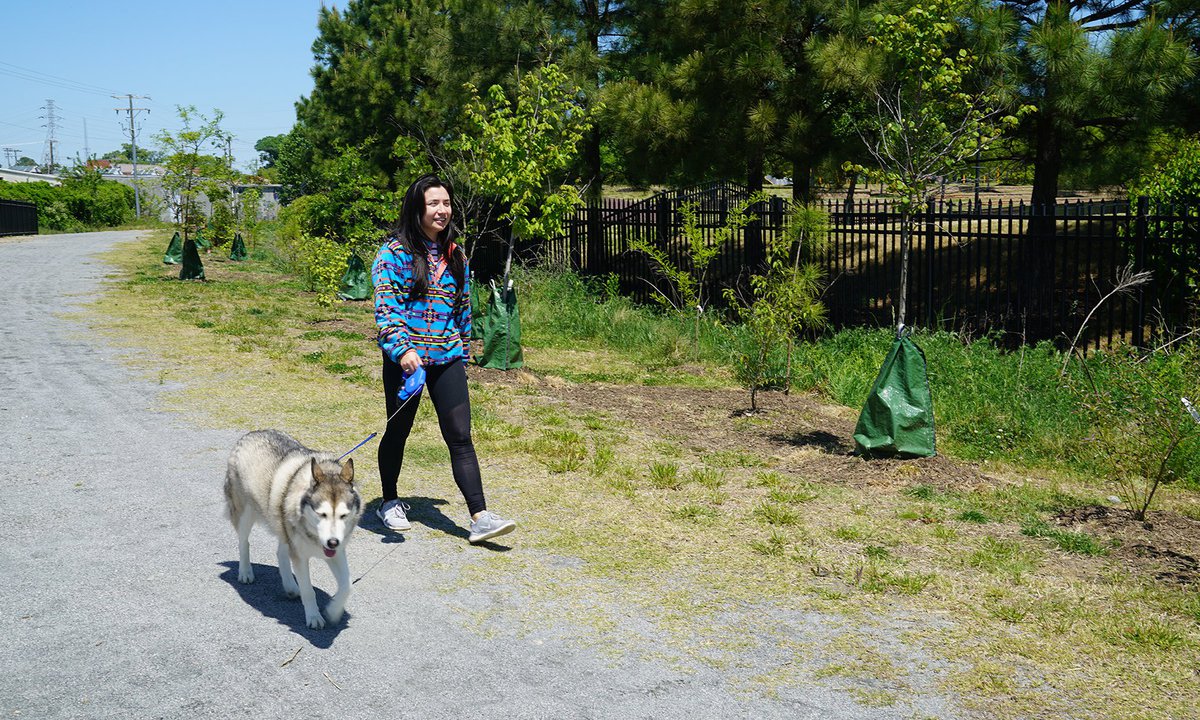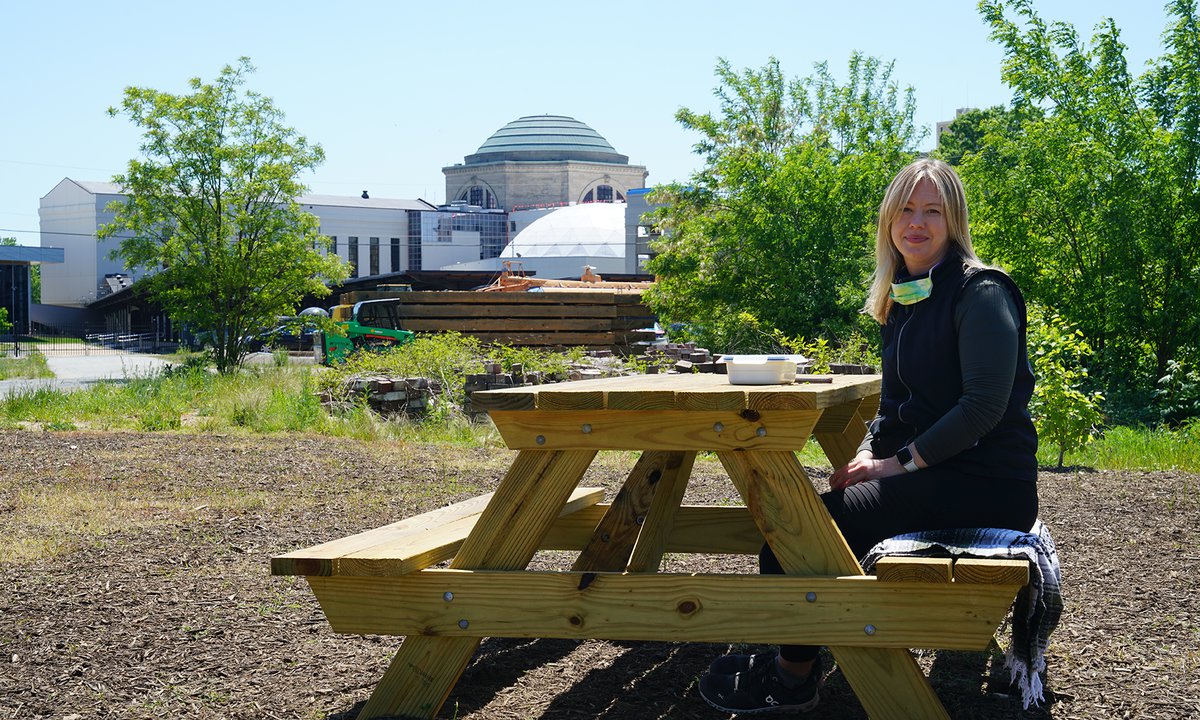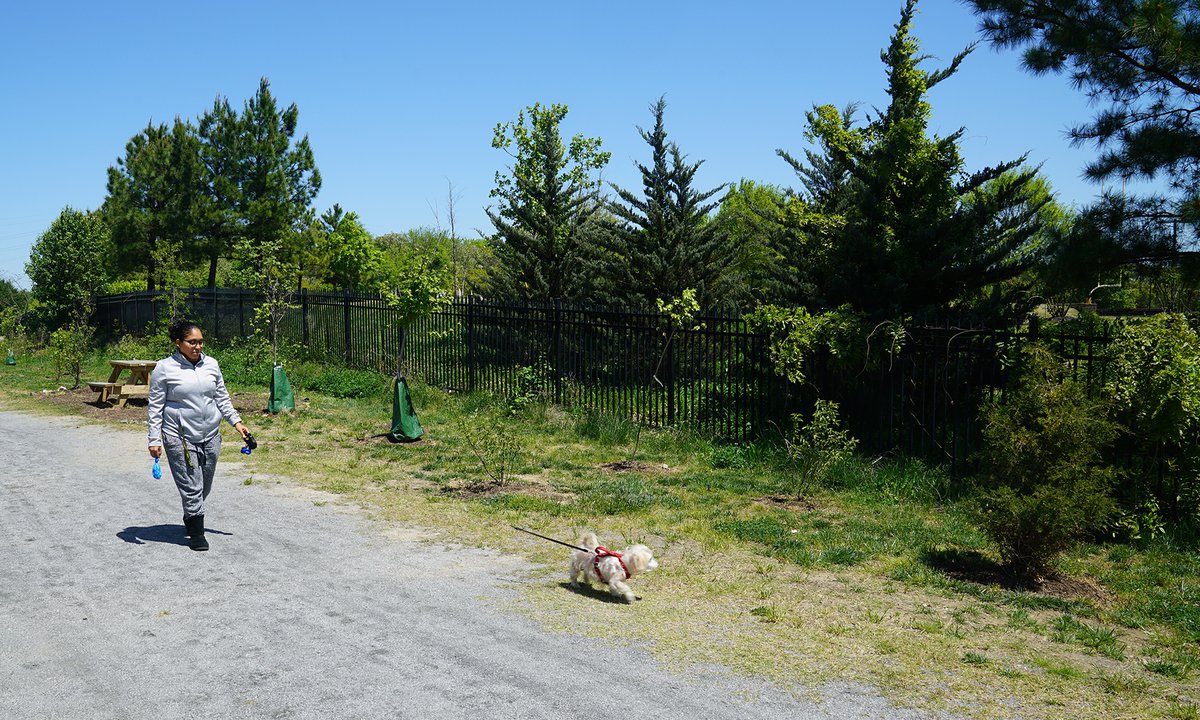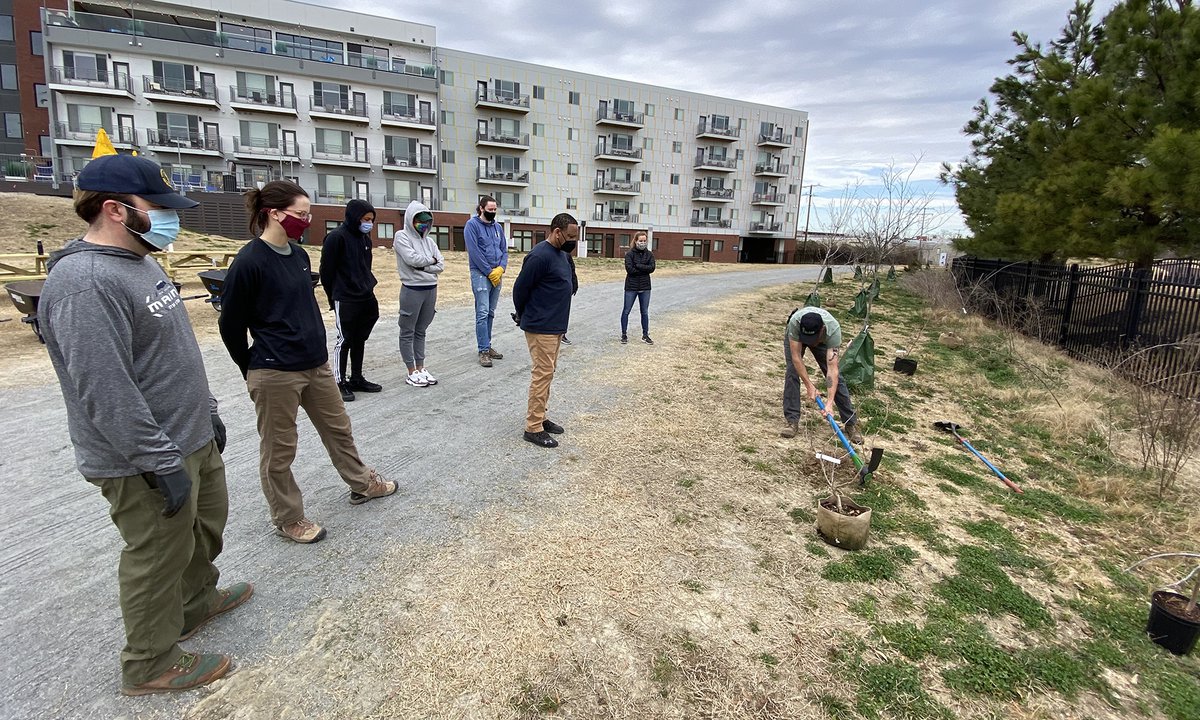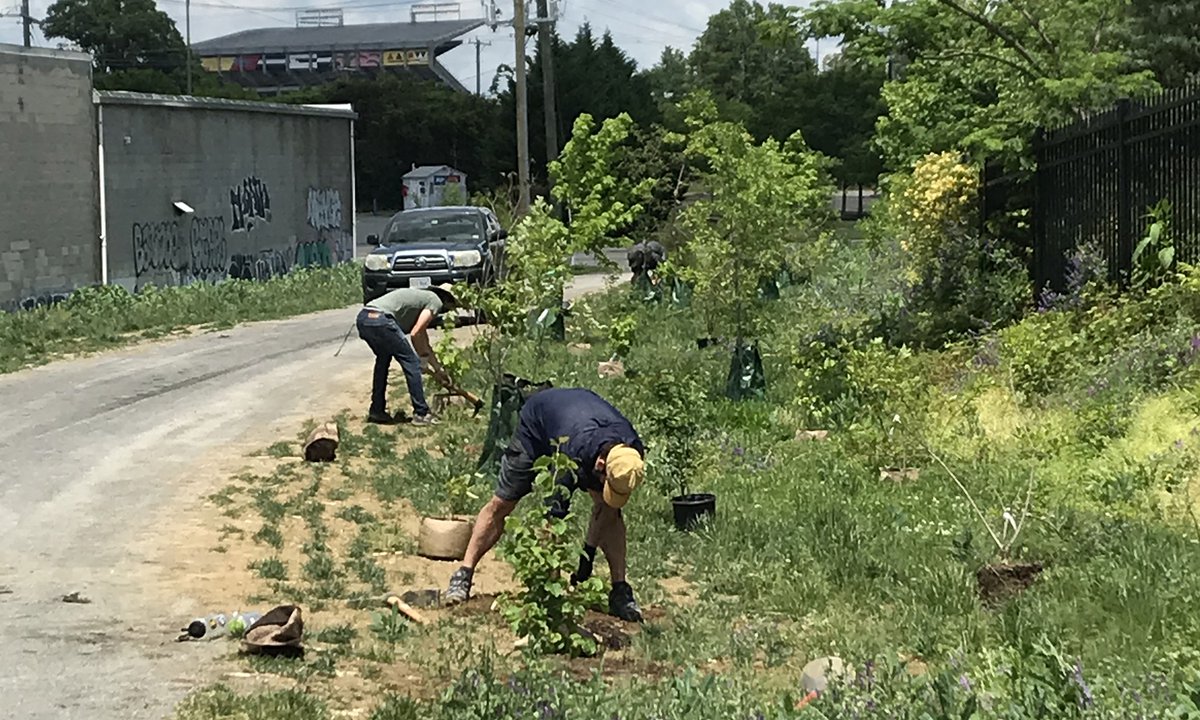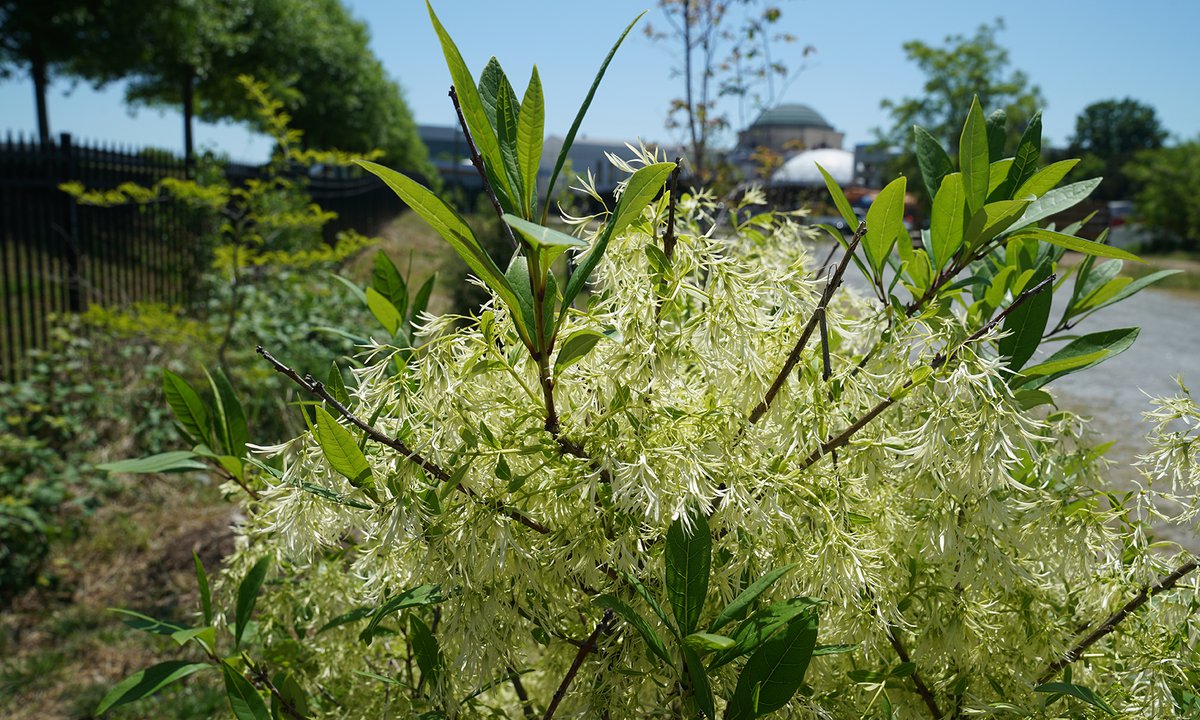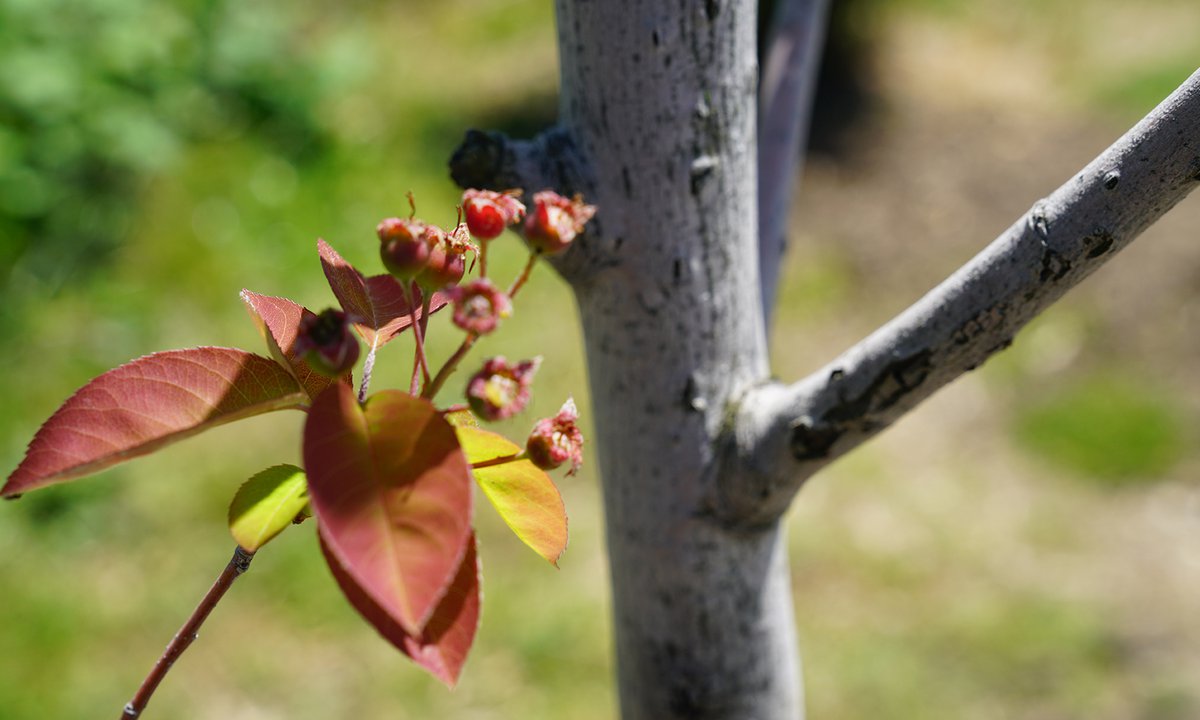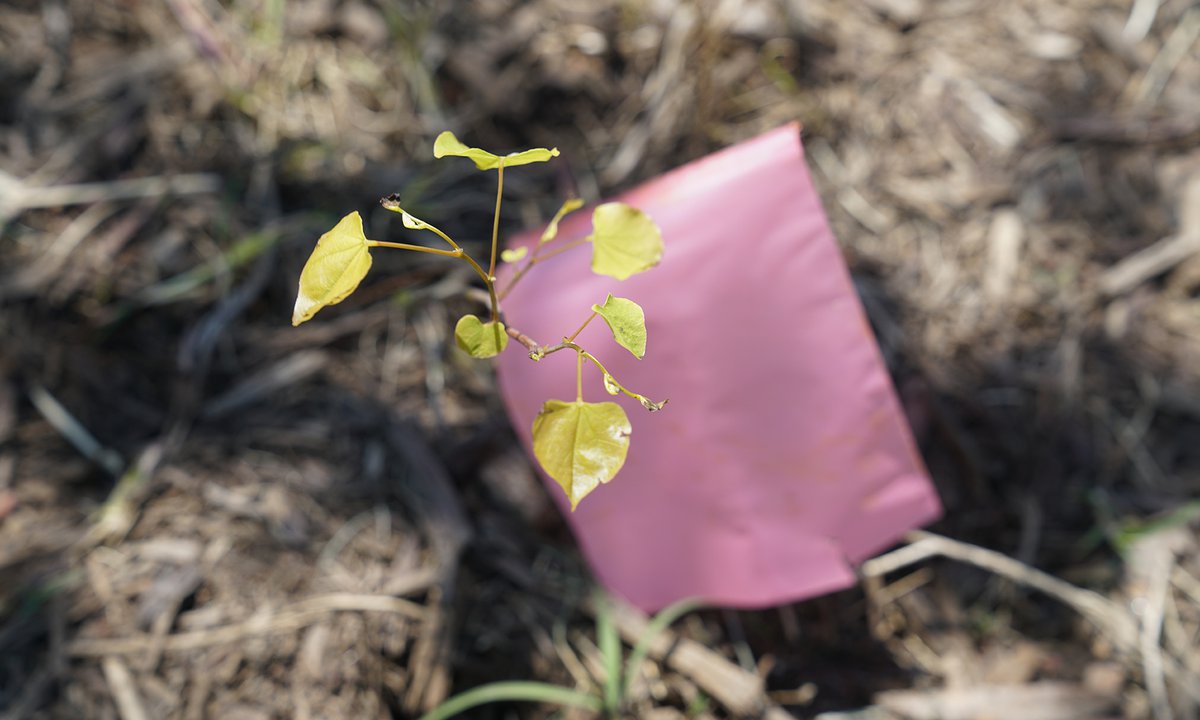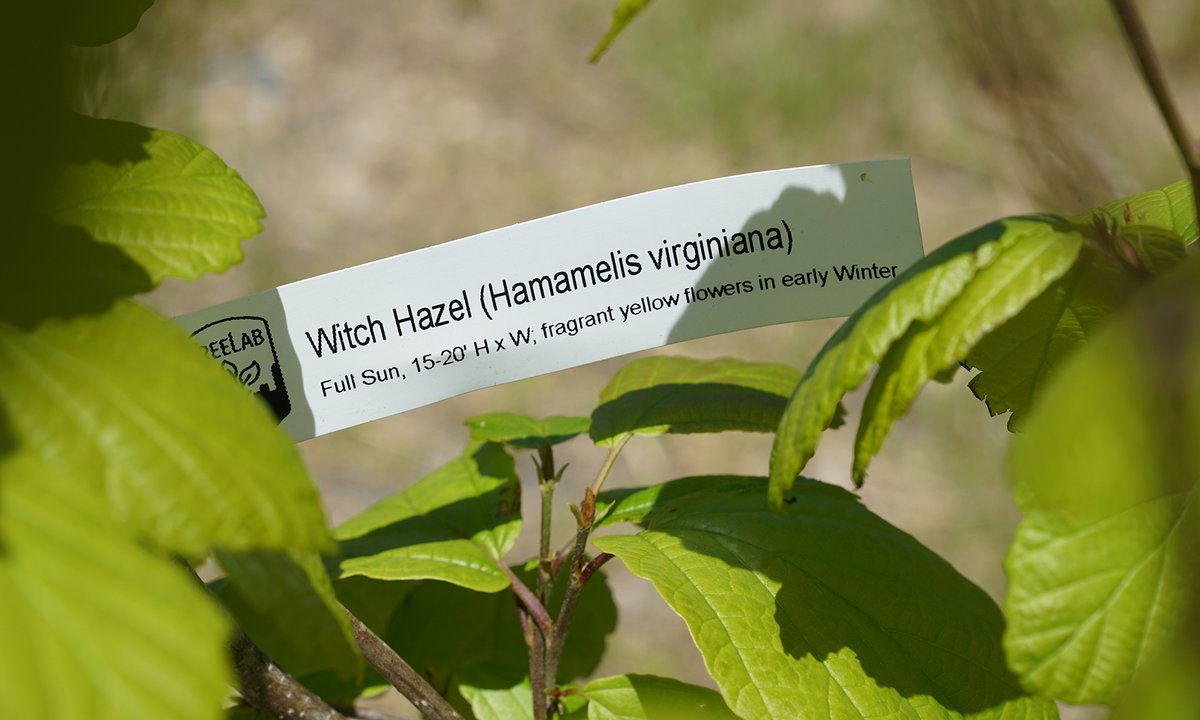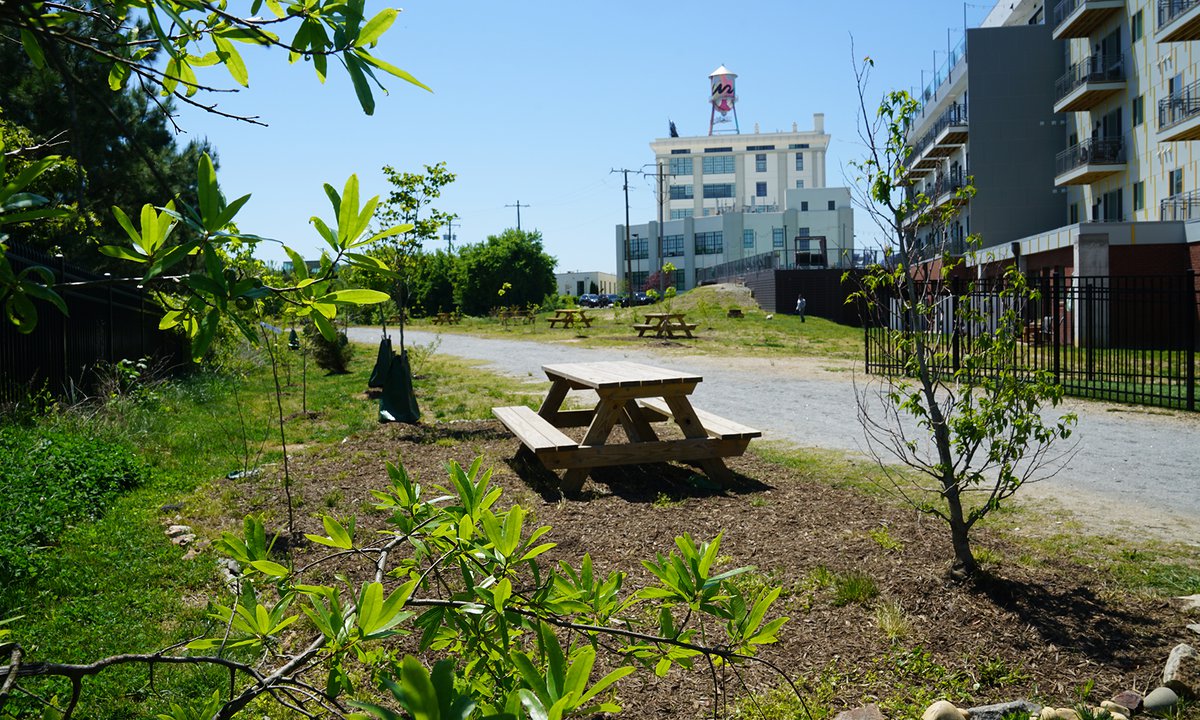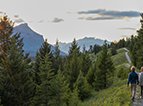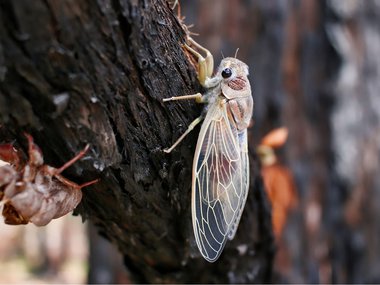Welcome to the ProtoPath!
There’s a new pedestrian- and bike-only path in town, and just in time for Arbor Day on April 30! Have you seen it? It’s right here at Science Museum of Virginia, connecting our campus directly to the bike lane on Leigh Street. One day, our ProtoPath will connect several planned bike/pedestrian paths all the way around Scott’s Addition and down into Carver.
It began as a plan, as most projects do, in 2018. But what’s happened since – four native tree and plant installation events with more than 60 volunteers and ongoing support from the community – is part of the ProtoPath’s evolution, and we can’t wait to see how it continues to develop!
What Is It?
The ProtoPath is an ongoing collaboration between the Science Museum of Virginia and several private and nonprofit partners, including the Greater Scott’s Addition Association, EnRichmond TreeLab, The Richmond Community ToolBank, SpyRock Real Estate Group, the Virginia Department of Forestry, Reforest Richmond, and the City of Richmond’s Planning and Development Review Department.
The almost .2 mile-long ProtoPath is our contribution to the City of Richmond’s plans to transform our historic rail lines into a multi-use pedestrian and bicycle path that will one day connect Scott’s Addition to the Museum’s campus, Leigh Street, and Allen Avenue in a more bike and people-friendly way. Located behind the training camp site, it can be accessed from either side, starting behind the Museum or entering from Leigh Street, and is safe as there is no vehicular traffic on the path.
For residents of all the new apartment complexes in Scott's Addition, it's also a place for an outside stroll or to sit at the picnic tables and enjoy lunch or have an outside visit with friends on a nice evening. We know how powerful outdoor spaces like this one are for our mental and physical health!
The project provides a useful, beautiful, and ecologically sustainable public space meant for pedestrians and cyclists. Imagine a world with more of these spaces for all of us!
Appreciating Trees
We’re extremely lucky to have had the opportunity to collaborate with EnRichmond TreeLab on this project, with funding provided by the Urban and Community Forestry Program at the Virginia Department of Forestry and the Spy Rock Real Estate Group. Volunteers joined us on four separate occasions to plant native trees and shrubs along the pathway in the late spring 2020 and March 2021. Volunteers came from all over the city, including Virginia Commonwealth University students, Museum members, and folks associated with the HandsOn Greater Richmond program. The Richmond Community ToolBank donated several picnic tables to provide seating along the path. We sincerely thank the close to 60 volunteers who have helped make this ProtoPath possible!
We’ve planted around 25 Virginia native trees and shrub species to maximize the Protopath’s ecosystem services to local flora and fauna, including nearby residents. As you walk along the ProtoPath, you will soon see that some trees and shrubs have signage in front of them so you can learn something new about each species as you stroll by.
Since the ProtoPath is making its debut for Arbor Day, we wanted to take a moment to showcase some of the amazing benefits of the pathway’s trees.
Trees and shrubs do more than serve as shade umbrellas. It’s remarkable how much climate-changing heat-trapping gases and storm drain-clogging rainfall the plants soak up throughout their lifetimes. They also provide food for early season pollinators and butterflies, as well as habitat for migratory and local birds like the house wren, various species of swallow and warbler, and of course the commonwealth’s state bird, the cardinal.
Here are some unique facts about a few of these beautiful native Virginia flora. The variety of species we’ve planted provide near year-round interest, as we have both early spring bloomers like the eastern redbud as well as evergreens like the loblolly pine and holly. We even have a few trees that produce edible berries like the serviceberry IF you can get them before the birds do!
- American Sycamore (Platanus occidentalis)
Mature size: 75-100 feet tall
American Sycamores can grow to the largest trunk diameter of any hardwood native to Virginia, almost 15 feet across! Individual trees can live to almost 600 years. They make a great shade tree for a large yard. By the time the trunk of the trees planted on the ProtoPath reaches 24 inches in diameter, it will soak up more than 7,000 gallons of rainwater every year.
- White Fringetree (Chionanthus virginicus)
Mature size: 12-20 feet tall
The genus Chionanthus means "snow" and "flower," describing the Fringetree’s white springtime blossoms. The bark and roots have been used by indigenous peoples to treat skin inflammations. The Fringetree is able to tolerate urban air pollution like ozone and sulphur dioxide, and by the time its trunk reaches 6 inches in diameter, it will soak up the carbon emissions of a car driving more than 150 miles.
- Loblolly Pine (Pinus taeda)
Mature size: 40-90 feet tall
An economically important timber species in this region of Virginia, Loblolly pine is notable for its straight growth form. Its annual rings are sensitive to environmental conditions like wetness and temperature, making this tree a potential “time machine” for climate science in the future. By the time this tree’s trunk reaches 24 inches in diameter, it will be soaking up more than 6,000 gallons of rainwater per year.
Why Do This?
The Museum has completed many interior projects over the past few years, and has turned its sights on enhancing its exterior spaces. The ProtoPath is one of the many living classroom experiences we’re adding.
As you may have heard (or seen), the Museum’s parking deck is more than halfway complete. It pays homage to the Broad Street Station aesthetic without dominating the landscape completely. It’ll provide more parking space for our guests than our current surface parking lots do, which is a bonus as we continue to invite science lovers back to the Museum as vaccination rates climb.
Once that construction is completed, we will begin the next stage of our campus’ evolution: a civic green space we’re tentatively calling “The Green!” The planned 5-acre park will include public art, stormwater mitigation projects (funded by a National Fish and Wildlife Foundation grant as well as the ConseRVAtion Fund), and a plant selection list that maximizes native trees, shrubs, and grasses wherever possible. We are thrilled to be transforming our urban campus into usable, beautiful, and ecologically valuable public spaces. Check back as we make plans for turning a parking lot into paradise over the next few years!
Curiosity Continued
Here’s a list of relevant pieces so you can continue exploring various topics mentioned in this blog:
- Celebrating Arbor Day by Exploring the Importance of Richmond’s Trees: https://smv.org/learn/blog/celebrating-arbor-day-by-exploring-the-importance-of-richmonds-trees/
- Can Access to Nature Improve Mental Health?: https://smv.org/learn/blog/can-access-nature-improve-mental-health/
- Celebrate Pollinator Week by Learning More about Lepidoptera: https://smv.org/learn/blog/celebrate-pollinator-week-learning-more-about-lepidoptera/
- Urban Heat Islands: https://www.youtube.com/watch?v=s_apVv7dbMQ
- Take a Phenological Walk: https://smv.org/learn/blog/take-phenological-walk-me/
- How Can We Reduce Stress during This Pandemic? https://smv.org/learn/blog/how-can-we-reduce-stress-during-pandemic/
- Stroll in the Sunshine: Vitamin D and the Immune System: https://smv.org/learn/blog/vitamin-d-and-immune-system/
- Climate Change Bop: https://www.youtube.com/watch?v=gwJ2cvIBRhs
- Pollination Syndromes: https://smv.org/learn/blog/pollination-syndromes-evolutionary-relationship-between-your-garden-and-its-inhabitants/
- Bridging Scientific Data and Lived Experiences to Equitably Prepare for Climate Change: https://smv.org/learn/blog/bridging-scientific-data-and-lived-experiences-equitably-prepare-climate-change/
- How Do Cities Handle Heat?: https://smv.org/learn/blog/how-do-cities-handle-heat/
- Lunch Break Science: Neuroscience and Nature: https://www.youtube.com/watch?v=tZPZCb9CrEY&t=28s
- What’s the Difference between Climate and Weather? https://www.youtube.com/watch?v=XxK5HD3nUl4&t=4s
